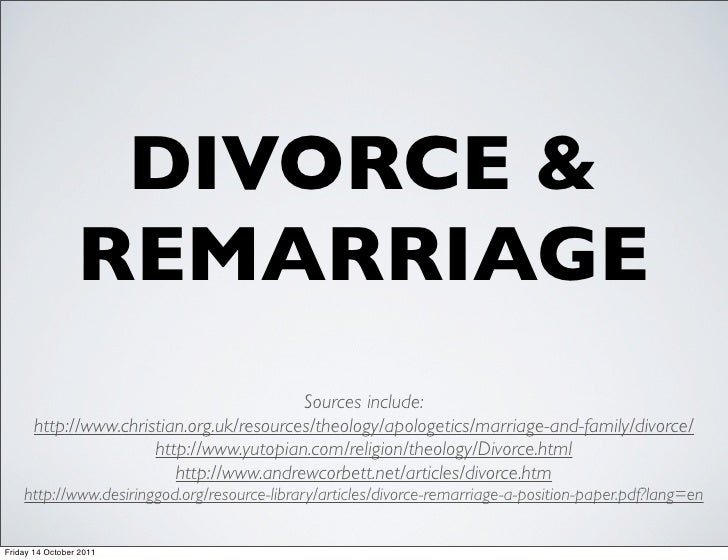Marriage And Divorce Articles
Marriage and Divorce. Follow the RSS feed for this page: Pew Research Center June 19, 2018. Migration, racial or ethnic self-identity, and marriage were among the many topics explored at the Population Association of America’s annual meeting last month. Social Trends April 25, 2018. Relationship experts can help the married deal with divorce and heal the divorced from the grief of ending of their relationship. Seeking divorce advice from a marriage therapist or a professional counselor is highly advisable. The articles below have useful divorce tips by verified experts.
Data extracted in June 2018.
Planned article update: May 2019.
Some 2.2 million marriages and 946 thousand divorces took place in the EU-28 in 2015.
The marriage rate in the EU has declined from 7.8 per 1 000 persons in 1965 to to 4.3 in 2015.
The divorce rate increased from 0.8 per 1 000 persons in 1965 to to 1.9 in 2015.
Crude marriage and divorce rates, EU-28, 1965-2015
- Note: Excluding French overseas departments for 1970 to 1990.
This article presents developments that have taken place in relation to family formation and dissolution through an analysis of marriage and divorce indicators. Marriage, as recognised by the law of each country, has long been considered to mark the formation of a family unit. However, the analysis of trends in family formation and dissolution based on just marriage and divorce data might not offer a full picture. Legal alternatives to marriage, like registered partnership, have become more widespread and national legislation has changed to confer more rights on unmarried couples. Recent demographic data show that the number of marriages per 1 000 persons decreased within the EU-28 in recent decades, while the number of divorces increased. An increase in the proportion of children who are born to unmarried couples was also observed.
Fewer marriages, more divorces
Some 2.2 million marriages and 946 thousand divorces took place in the EU-28 in 2015, according to the most recent data available for all EU Member States. These figures may be expressed as 4.3 marriages for every 1 000 persons (in other words the crude marriage rate) and 1.9 divorces for every 1 000 persons (in other words the crude divorce rate).
Newspaper Articles On Marriage And Divorce
Since 1965, the crude marriage rate in the EU-28 has declined by close to 50 % in relative terms (from 7.8 per 1 000 persons in 1965 to 4.3 in 2015). At the same time, the crude divorce rate has more than doubled, increasing from 0.8 per 1 000 persons in 1965 to 1.9 in 2015. Part of this increase may be due to the fact that in several EU Member States divorce was legalised during the period (for example, in Italy, Spain, Ireland and Malta).
(per 1 000 persons)
Source: Eurostat (demo_nind) and (demo_ndivind)
Table 1 shows that in 2016, among the EU member States the highest crude marriage rate were in Cyprus (7.5) and in Lithuania (7.4). The lowest crude marriage rates were reported in Portugal (3.1 marriages per 1 000 persons) and in both Luxembourg and Slovenia (3.2). In the candidate countries the crude marriage rate was generally higher than in the EU, the peak was reached in Albania (7.8 marriages per 1 000 persons) and Turkey (7.5), where the rates were similar to the highest rates in the EU. Among the EFTA countries the crude marriage rate was available for Norway (4.5 marriages per 1 000 persons) and Switzerland (5.0).
(per 1 000 persons)
Source: Eurostat (demo_nind)
As regards divorce (see Table 2), in 2016 the lowest crude rates in the EU were registered in Malta (0.8 divorces per 1 000 persons) and Greece (1.0); in general eastern or southern Member States —Slovenia (1.2), Romania and Bulgaria (both 1.5) and Italy (1.6) — had low crude rates. By contrast, divorce rates were higher in several northern Member States, notably Latvia and Lithuania (both 3.1 divorces per 1 000 persons), Denmark (3.0 ), Estonia and Finland (both 2.5). In 2016 the candidate countries had generally low crude divorce rate, ranging from a minimum in former Yugoslav Republic of Macedonia (1.0 per 1 000 persons) to a maximum in Albania (1.9). Among the EFTA countries for which data are available, crude divorce rate was around 2.0 divorces per 1 000 persons.
(per 1 000 persons)
Source: Eurostat (demo_ndivind)
A rise in births outside marriage
The proportion of live births outside marriage in the EU-28 in 2016 was 42.6 % (see Table 3) . This share has continued to increase, signalling new patterns of family formation alongside the more traditional pattern where children were born within marriage. Extramarital births occur in non-marital relationships, among cohabiting couples and to lone parents.
In 2016 extramarital births outnumbered births inside marriage in several EU Member States: France (59.7 %), Bulgaria and Slovenia (both 58.6 %), Estonia (56.1 %), Sweden (54.9 %), Denmark (54.0 %), Portugal (52.8 %) and the Netherlands (50.4 %), as well as in Iceland (69.6 %) and Norway (56.2 %) among the EFTA countries. Mediterranean countries like Greece, Croatia, Cyprus, and Italy along with Poland and Lithuania, were generally at the other end of the scale as more than 70 % of births in each of these Member States occurred within marriage; in Turkey this share was as high as 97.1 %.
(share of total live births, %)
Source: Eurostat (demo_find)
The share of children that were born outside of marriage increased in the EU-28 from 27.3 % in 2000 to 42.6 % in 2016. Looking at the latest available data, extramarital births increased in almost every EU Member State in 2016 compared with 2015, with the exceptions of Estonia, Italy, Latvia, Lithuania, Hungary and the United Kingdom. In Bulgaria and Ireland there was no variation.
Data sources
Eurostat compiles information on a wide range of demographic data, including data on the number of marriages by sex and previous marital status and statistics relating to the number of divorces. Data on the number of live births according to the mother’s marital status may be used to produce an indicator that shows the proportion of births outside marriage.


Source data for tables and graphs
Context
The family unit is a changing concept: what it means to be a member of a family and the expectations people have of family relationships vary with time and space, making it difficult to find a universally agreed and applied definition. Legal alternatives to marriage, like registered partnerships, have become more widespread and national legislation has changed to confer more rights on unmarried and same sex couples. Alongside these new legal forms, other forms of non-marital relationships have appeared, making it more difficult for statisticians to collect data within this domain that can be compared across countries.
Due to differences in the timing and formal recognition of changing patterns of family formation and dissolution, these concepts have become more difficult to measure in practice. Analysts of demographic statistics therefore have access to relatively few complete and reliable data sets with which to make comparisons over time and between or within countries.

See also
Publications
Main tables
- Marriage and divorce (t_demo_nup), see:
- Crude marriage rate (tps00012)
- Crude divorce rate (tps00013)
Marriage And Divorce Journal Articles
Dedicated section
Methodology
- Marriages and divorces (ESMS metadata file — demo_nup_esms)
Marriage And Divorce
- ISSN 2443-8219